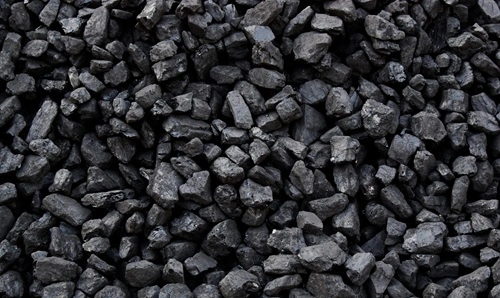Coal has been a cornerstone of global energy production for centuries, powering industrial revolutions, generating electricity and fueling economies. As one of the most abundant and accessible fossil fuels, coal remains a significant part of the energy mix in many countries. However, as environmental concerns and the push for cleaner energy sources grow, coal’s role in the energy landscape has become a topic of heated debate.
This article explores the pros and cons of coal, shedding light on its advantages and disadvantages to help better understand its impact on energy production, the environment, and society.
What is Coal?

Coal is a fossil fuel formed from the remains of plants and organic matter that were buried and subjected to heat and pressure over millions of years. The result is a combustible sedimentary rock rich in carbon and other elements, making it an effective energy source. Coal is primarily used for electricity generation, steel production, and industrial processes.
Coal comes in four main types:
- Anthracite: The hardest and most carbon-rich type, often used in metallurgy.
- Bituminous: Commonly used for electricity generation and industrial purposes.
- Sub-bituminous: Lower carbon content than bituminous coal, used for power generation.
- Lignite: The lowest grade of coal, primarily used for electricity in regions with limited resources.
The Pros of Coal
1. Abundant Supply
Coal is one of the most abundant energy resources on Earth, with reserves found in over 70 countries. The widespread availability of coal ensures a reliable energy supply for nations with significant reserves, reducing dependence on imported fuels.
2. Affordable Energy Source
Coal is one of the most cost-effective energy sources, particularly in countries with extensive coal deposits. Its relatively low extraction and production costs make it an economical choice for electricity generation and industrial use.
3. Reliable Energy Production
Unlike renewable energy sources such as wind or solar, coal provides consistent and reliable energy output. Coal-fired power plants can operate around the clock, making them a dependable option for meeting base-load electricity demands.
4. High Energy Density
Coal has a high energy density, meaning a small amount of coal can produce a significant amount of energy. This efficiency makes it a valuable resource for industries requiring large-scale energy production, such as steel and cement manufacturing.
5. Supports Economic Growth
The coal industry creates jobs in mining, transportation, and energy production. In regions with abundant coal resources, the industry contributes significantly to local economies and government revenues.
6. Infrastructure and Technology
The technology and infrastructure for coal extraction, transportation, and power generation are well-established and widely available. This reduces the need for significant upfront investments compared to newer energy technologies.
7. Versatility
Coal is not only used for electricity generation but also plays a critical role in industrial applications such as steelmaking (via coking coal) and chemical production. This versatility makes it an integral part of various economic sectors.
8. Energy Independence
For nations with significant coal reserves, relying on coal for energy can reduce dependence on imported fuels, enhancing energy security and independence.
9. Can Be Stored Easily
Coal can be stored for long periods without significant energy loss, unlike some renewable energy sources that depend on batteries or other storage technologies. This makes it a practical option for managing energy supply and demand fluctuations.
10. Emerging Clean Coal Technologies
Advancements in clean coal technologies, such as carbon capture and storage (CCS), offer the potential to reduce the environmental impact of coal-fired power plants. These technologies aim to capture and store CO₂ emissions before they reach the atmosphere.
The Cons of Coal
1. Environmental Impact
Coal is a significant contributor to environmental degradation. Its mining, transportation, and combustion release harmful pollutants, including sulfur dioxide (SO₂), nitrogen oxides (NOₓ), and particulate matter, which contribute to air pollution, acid rain, and respiratory illnesses.
2. Greenhouse Gas Emissions
Coal is the largest source of carbon dioxide (CO₂) emissions globally, making it a major driver of climate change. The combustion of coal releases more CO₂ per unit of energy produced than most other fossil fuels, such as natural gas.
3. Non-Renewable Resource
Coal is a finite resource, and while reserves are currently abundant, they will eventually deplete. This limits its long-term viability as a sustainable energy solution.
4. Health Risks
Coal mining and combustion pose significant health risks to workers and nearby communities. Miners are at risk of developing lung diseases like pneumoconiosis (black lung disease), while air pollution from coal-fired power plants can cause respiratory and cardiovascular problems.
5. Habitat Destruction
Coal mining, particularly surface mining methods like mountaintop removal, causes extensive habitat destruction and landscape alteration. These activities can lead to biodiversity loss and long-term ecological damage.
6. Water Pollution
Coal mining and processing generate significant amounts of waste, which can contaminate water supplies. Acid mine drainage, a common byproduct of coal mining, releases harmful chemicals like heavy metals into rivers and groundwater.
7. High Transportation Costs
While coal itself is affordable, transporting it can be expensive and energy-intensive. The need for railways, trucks, or ships to move large quantities of coal increases its overall environmental and economic costs.
8. Dependence on Aging Infrastructure
Many coal-fired power plants are aging and inefficient, requiring costly upgrades or replacements to meet modern environmental and efficiency standards. Investing in outdated infrastructure may divert resources from cleaner energy technologies.
9. Public Opposition
As awareness of climate change and environmental issues grows, public opposition to coal has increased. Protests, policy changes, and divestment campaigns have led to declining investments in coal projects.
10. Transition to Renewable Energy
The global shift toward renewable energy sources like wind, solar, and hydroelectric power is making coal less competitive. Renewable energy technologies are becoming more affordable, efficient, and scalable, reducing coal’s role in the energy mix.
Who Should Consider Using Coal?
Coal remains a viable option for:
- Countries with Abundant Reserves: Nations with significant coal deposits, such as China, India, and the United States, rely on coal for energy independence and economic development.
- Industries Requiring High-Temperature Processes: Sectors like steel and cement production depend on coal for its high energy density and specific properties.
- Regions Lacking Alternatives: In areas where renewable energy infrastructure is underdeveloped, coal can provide a reliable and affordable energy source.
However, coal may not be the best choice for regions or industries aiming to prioritize sustainability, reduce carbon emissions, or transition to cleaner energy solutions.
Tips for Managing Coal’s Impact
- Invest in Clean Coal Technologies: Support research and adoption of technologies like carbon capture and storage to mitigate emissions.
- Implement Stringent Regulations: Enforce environmental standards to minimize pollution and ecological damage from coal mining and combustion.
- Diversify Energy Sources: Reduce dependence on coal by integrating renewable energy into the energy mix.
- Promote Energy Efficiency: Upgrade existing coal-fired power plants to improve efficiency and reduce emissions.
- Plan for a Just Transition: Support workers and communities affected by the decline of the coal industry through job training and economic diversification programs.
Conclusion
Coal has played a pivotal role in shaping modern energy systems and industrial progress, offering reliability, affordability, and versatility. However, its significant environmental and health impacts, coupled with the global push toward renewable energy, have raised questions about its long-term sustainability.
By carefully weighing the pros and cons of coal, policymakers, industries, and individuals can make informed decisions about its role in the energy landscape. While coal remains a valuable resource for certain applications, the transition to cleaner and more sustainable energy sources is essential for addressing climate change and ensuring a healthier future for all.



